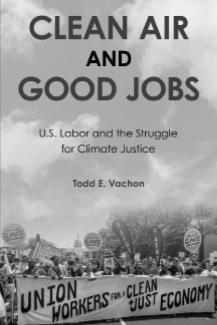The novel Ministry of the Future opens with the death of more than twenty million people in India as a result of an intense heat wave. To prevent further loss of life, the national government sprays sulfate particles into the stratosphere to reflect sunlight back into space and lower the subcontinent’s surface temperature. Ministry of the Future is science fiction, but the technology, known as Solar Radiation Modification, is increasingly real. SRM proposes shading the planet to decrease global temperatures, but there are a host of unknowns about the positive, negative, or mixed effects on land and ocean. Meanwhile, the National Academy of Sciences published a report in 2021 stating that SRM is the only way to cool the planet. In 2022, Congress appropriated money for the White House Office of Science and Technology Policy and the National Oceanic and Atmospheric Administration to study SRM applications. Two attempts at deploying the technology have been started and stopped by governments in the last few years—one in Sweden and one in Mexico. A robust code of conduct to govern SRM research that considers ocean health and related equity issues cannot come soon enough.
Emissions of carbon dioxide and other greenhouse gases must be drastically reduced to moderate global temperature increases. To date, the rate of reductions has not been fast enough to prevent such effects as changes in the ocean’s depth, chemistry, and temperature, and in turn, its role in moderating the global climate. For example, the summer 2023 average daily global sea surface temperature reached 69.73 degrees Fahrenheit (over 100 degrees off Florida)—both far above the average. Warmer waters can accelerate the melting of glaciers and thus sea-level rise, while also reducing the ocean’s ability to absorb carbon dioxide. Instead of embracing a critically needed systems change, one that would drastically reduce greenhouse gas emissions—with numerous ancillary benefits, such as huge reductions in criteria pollutants and the millions of annual deaths those emissions entail worldwide—many are looking for ways to perpetuate the economic and social status quo. Enter climate geoengineering—an attempt to reverse, stall, or mitigate GHG impacts, primarily excess heating. By redirecting incoming radiation to decrease planetary temperatures, SRM and other techniques attempt to partially mask symptoms of human-caused climate change rather than address its drivers.
Through natural systems, the Earth both reflects and absorbs sunlight to maintain a stable climate. SRM is based on the idea that increasing reflectivity will decrease the amount of sunlight that makes it through the atmosphere to the Earth’s surface, artificially reducing the warming that is underway. However, this proposal has the potential to upset natural processes that depend on direct sunlight—such as photosynthesis by all ocean and terrestrial plants. In addition to spraying reflective particles, there are also SRM strategies to change or increase cloud cover, threatening natural precipitation patterns on which many nations’ food supplies depend. Common sense dictates careful consideration of any potential human activity that affects the life-support roles of the ocean to generate oxygen, absorb carbon dioxide emissions, and moderate the climate.
As in Ministry of the Future, the real world aim of SRM is to increase the amount of sunlight reflected back into space to slow the warming of the planet. The technology’s apologists reason that the limited global action on reducing carbon emissions necessitates speedy approval of SRM research proposals and deployment. However, geoengineering methods can have wildly uneven effects on the ocean and, in turn, on individual countries and regions. They also pose a moral hazard if they reduce the urgency to transition away from fossil fuels and divert effort away from the necessary GHG emission-reduction strategies. This moral hazard problem has particular resonance for the marine ecosystem, which is quietly absorbing excess carbon and altering seawater’s chemical balance in the process, threatening numerous unseen animals and plants at the base of the food chain. Without dramatic GHG reductions, the future of the oceanic environment—and all that means for humanity—is at stake.
Currently proposed SRM projects range from using particulate matter to reflect sunlight to the installation of mirrors in space. Stratospheric Aerosol Injection, the tech used in the novel, is the targeted release of airborne sulfate particles to increase the reflectivity of the Earth, reducing the amount of sunlight that reaches the ground and the heat trapped in the atmosphere. It is, theoretically, similar to a huge, semi-transparent sun umbrella. SAI is not the only type of SRM that would directly reflect sunlight and solar radiation. Another proposes to increase the ability of the surface of the Earth to reflect radiation back into space. Surface-Based Brightening/Albedo Modification aims to decrease the amount of solar radiation that remains in Earth’s atmosphere. Rather than using chemistry or molecular methods, surface-based brightening seeks to increase the reflectivity of the planet’s surface through physical alterations to urban areas, roads, agricultural land, polar regions—and the ocean. This may include covering these areas with reflective materials to redirect sunlight back out to space—in many cases wiping out the local ecology.
Two other methods propose to alter cloud cover. One seeks to thicken lower clouds to prevent radiation from reaching the land and sea, while the other aims to thin high-level clouds to increase the escape of radiation. Marine Cloud Brightening pumps sea spray to seed low-level clouds over the ocean, intending to catalyze a brighter and thicker cloud layer. These low clouds prevent incoming radiation from reaching the land or sea below. The second involves upper-level cirrus clouds, which absorb and reflect heat back to the Earth. Scientists have proposed such Cirrus Cloud Thinning to reduce the thermal energy reflected by these clouds and allow more heat to exit the atmosphere. CCT means spraying these kinds of clouds with particles to reduce their life-span and thickness.
There are methods that are outliers even in the science-fiction-like SRM arena. The Space Mirrors proposal would place highly reflective objects in orbit to redirect incoming sunlight. Moon Dust is a newly proposed method that works in a similar method to SAI. Rather than injecting particles into the atmosphere to reflect sunlight, this concept suggests sending mined particles from the Moon into orbit well above Earth’s atmosphere.
All of these proposals represent the diversion of significant funds away from research and deployment of known strategies to reduce GHGs through renewable energy powering an electric economy.
Apart from the fundamental need to continue reducing carbon emissions, climate geoengineering projects must be tested with an eye to ensuring their safety for all life on Earth. SRM will have effects that extend beyond any nation’s borders. Important to our discussion, any of these methods, if deployed, would also affect the ocean and thus the terrestrial biosphere as a whole. Yet the ocean is absent from most conversations about SRM (and climate geoengineering generally). Many of these proposed projects would, at the very least, dump particles of foreign matter into the marine environment at scale. Further, if functional, all would cause the ocean to receive less sunlight. Less sunlight may reduce photosynthesis, and in turn, affect carbon uptake and storage, oxygen production, and the ocean food web. If some larger nations were to deploy SRM projects to shade their lands, the ocean will continue to get warmer, helping one part of the globe while hurting the other. Consequences may disproportionately fall on small island nations threatened by sea-level rise, now also challenged by shifting nutrient loads, changing precipitation patterns, and exacerbating changes in ocean chemistry.
The ocean is a natural carbon sink, capturing 25 percent of atmospheric carbon dioxide emissions. It is also a heat sink, retaining 90 percent of the Earth’s excess heat. However, fossil fuel emissions and other human activities are disrupting these critical ocean services. SRM strategies conceal the non-heat-related effects of climate emissions and may actually increase GHG totals through their construction and deployment. Because the technology remains speculative and ill-defined, the consequences remain unknown. Thus, it is impossible to fully evaluate the side effects, particularly of the impact of proposed SRM deployments on the oceanic and land-based environments. But the seas’ interconnectedness makes it likely that any SRM impacts on the marine environment would be transboundary and global.
Last June, the White House issued a report to respond to a congressional mandate calling for a research plan for SRM and an initial research governance framework. The report highlights the risks and unknowns about this technology as well as the supposed benefits. It details the major gaps on which to focus research and confirms that a question about SRM is not just one of science efficacy or unintended environmental harm. It is also a question that must encompass societal dimensions, including environmental justice, public perceptions, human health and well-being, food and water systems, ecosystem services, economic infrastructure, and geopolitics. The White House report stresses the need for a comparative analysis to identify the differences between the risks associated with SRM compared with the risks of climate change in the absence of geoengineering.
The report misses a key point on evaluation and the potential for termination shock. In addition, it does not explicitly address the potential that SRM will reduce incentives to cut carbon emissions, which will have a huge negative effect on the marine environment. It does speak to intergenerational equity, which might open the door to examining the risk posed by such a moral hazard. Overall, the White House emphasizes the need for transparency in SRM research for the sake of the public’s trust, whether or not that research transitions into deployment.
Such transparency can be gained through the development of a legal framework to govern the research and deployment of any geoengineering technology. Such a system must take into account the security and well-being of individual nations as well as the global ocean on which all life depends. It thus should include consideration of the risk to the natural environment and the exacerbation of geopolitical tensions and global inequities.
Physical and environmental repercussions exist for each SRM method that has been proposed. Whether it is the introduction of sulfate or calcium carbonate particles into the atmosphere (and thus into the ocean) or shifting cloud (and precipitation) patterns, impacts on land-based and marine ecosystems and food systems are likely. At the same time, such effects cannot be fully anticipated, and experience counsels they are likely to be underestimated. Only the most precautionary legal regime can mitigate harm.
Beyond physical risk, the many unknowns regarding positive or negative impacts of SRM introduce actual and perceived equity risks that may exacerbate geopolitical tensions. There is currently no international governance regime for geoengineering. Indeed, discussions on such an agreement have yet to begin. In this regulatory vacuum, countries and other entities have space for unilateral action that could result in unjust or inequitable outcomes. In fact, SRM actions to date have lacked the foresight for the needed consultation on this global problem. Without this consultation, the potential for spillover effects is high, and much larger with anticipated action on a national level. On a country-by-country scale, the world’s political borders would do little to stop positive or negative overflow effects into neighboring countries or environments. The Earth’s land, sea, and sky are intrinsically connected through many natural systems that supersede human governance.
As work continues on SRM, the countries with the ability to research and develop projects are likely to be those wealthy and powerful nations with the greatest responsibility for historic carbon emissions. Any individual country’s ability to address negative effects from other nations’ SRM projects would depend on its wealth and the extent to which those negative effects harm that country’s human communities and natural resources. There would be no viable means of redress for injured private parties, communities, or governments. Rather, harm from SRM projects may result in diplomatic tensions and, possibly, military conflicts. Even in the absence of real effects, tensions could arise over perceived negative impacts. SRM—or the threat thereof—could thus be weaponized.
If climate geoengineering projects were to go forward, the side effects would be far reaching, affected by the complex interactions of systems—both human and natural. For this reason and others, SRM research must be guided by a code of conduct to ensure equitable solutions to the climate crisis—and be governed by enforceable law that prioritizes environmental justice and conservation of natural resources. Thus, a priority must be placed on protecting the marine systems and restoring abundance to help the ocean heal itself. All potential interventions should be considered in the context of free, prior informed consent by stakeholders at all stages —including extraction, transport, and implementation. Additionally, the ability of projects to measure, monitor, verify, and report their successes or failures, and promise equitable benefit sharing must be taken into account.
Decisionmakers can rely on well-established legal principles to inform governance on climate geoengineering proposals. These include the precautionary principle, the polluter-pays principle, the do-no-harm expectation, and all three considered through an ecosystem approach.
The precautionary principle requires the party seeking to test the proposed SRM activity to prove it will cause no harm. As the ocean’s currents connect all waters and continents, applying this principle would require research to determine how any physically released particulate matter (as an example) would affect biodiversity, ocean functions such as oxygen production and carbon and heat uptake, and the downstream or upstream impacts of shading one region of the world over another.
The polluter-pays principle requires consideration of the potential harm from and liability for introducing any substances to the ocean as part of a climate geoengineering activity. Similar to when applying the precautionary principle, the polluter-pays principle must underpin permissions for any projects that release foreign substances into the atmosphere or Earth orbit.
The do-no-harm expectation is customary under international law and, in the context of the ocean, this principle would require projects to ensure the safety of marine life, ocean ecosystems, and human-ocean relationships.
Finally, an ecosystem approach would require any climate geoengineering activity to not endanger marine life or the ecological relationship as a whole among living marine resources, coastal systems, and the ocean’s life-giving global functions.
Governance can also begin with existing international frameworks for promoting human rights, security, and healthy ecosystems. Given the unknowns posed by SRM, international treaties offer opportunities to mitigate the impact of climate geoengineering at a global level even as more specific agreements are negotiated. Multiple international treaties include provisions to protect the ocean and its co-benefits for ecosystems and humans.
The UN 2030 Agenda for Sustainable Development is the “shared blueprint” that recognizes that ending poverty and other deprivations must go hand-in-hand with strategies that improve health and education, reduce inequality, and spur economic growth—all while tackling climate change and working to preserve our ocean and forests. The guidance offered by the 17 associated Sustainable Development Goals can be broadly applied to SRM. In particular, SDG 14 requires that we “conserve and sustainably use the ocean, seas, and marine resources for sustainable development” by reducing pollution, protecting and strengthening resources, and minimizing ocean acidification. Reducing greenhouse gas emissions certainly supports those strategies. SRM does not.
The 1992 Convention on Biological Diversity (and its 2022 agreement) establishes a de facto moratorium on ocean climate geoengineering unless various preconditions have been met. The 1991 Espoo Convention established rules for transboundary environmental impacts and may provide an example of one or more methods to govern and enforce transboundary impacts from SRM projects. The Antarctic Treaty System creates an obligation to avoid significant changes to the Earth’s atmospheric, terrestrial, oceanic, or glacial environments.
The United Nations Convention on the Law of the Sea mandates protection and preservation of the marine environment. With the release of particulate matter or other SRM methods, that mandate may be applied to international discussions guiding SRM activities. The Commission of Small Islands States on Climate Change and International Law has petitioned the International Tribunal of the Law of the Sea on the obligation of UNCLOS parties to protect the ocean from climate change. Decisionmakers will need to consider SRM in this context, within a just transition to economies that no longer rely on fossil fuels.
The United Nations Framework Convention on Climate Change began hosting Ocean and Climate Change Dialogues in 2022, providing space for countries around the world to discuss impacts on the ocean and consider the best marine-based solutions to climate change. While it is currently unknown to what extent SRM projects will change the Earth’s environments, it is clear that these protective frameworks should be used to guide research, testing, and deployment.
Beyond environmental considerations, SRM may adversely affect human rights, raising justice and equity concerns for developing nations and minority communities. In March, the UN General Assembly submitted a request for an advisory opinion of the International Court of Justice, essentially requesting the court render an opinion on the obligations of states under international law to ensure the protection of the climate system from anthropogenic emissions of greenhouse gasses.
SRM also may present a variety of security concerns. International precedent on the militarization of such technology is currently covered under the Convention on the Prohibition of Military or Any Other Hostile Use of Environmental Modification Techniques. The modification of a neighboring country’s immediate atmosphere, land, or sea may be seen as aggressive. Both the liability for such negative impacts and the process for establishing the degree of harm need to be incorporated into any process for reviewing SRM research and testing.
Within the United States, decisionmakers could look to the precautions under the Marine Mammal Protection Act, the Wilderness Act, and the Endangered Species Act or the pollution prevention frameworks under Clean Water Act and Clean Air Act, as well as Superfund and other toxics laws to anticipate and address some effects of SRM. Policy could further be informed by the White House Environmental Justice Interagency Council, the administration’s Justice40 Initiative, and the EJ Screening Tool & Scorecard.
SRM should be also evaluated through the lens of a growing body of nature- and climate-positive financial and investment decisionmaking tools such as the Task Force on Climate-related Financial Disclosure, known as TCFD, and the Task Force on Nature-Related Financial Disclosure, TNFD. Public and private financiers should consider whether and, if so, with what qualifiers, geoengineering projects would comply with their lending policies.
Despite the array of forums where discussions on climate geoengineering and governance may be relevant, none is an exact fit for the questions posed by SRM projects. Efforts are underway to develop more tailored frameworks to address the legal issues raised by climate geoengineering.
In 2021, the Aspen Institute issued “Guidance for Ocean-Based Carbon Dioxide Removal Projects: A Pathway to Developing a Code of Conduct” and expects to release such a code in the coming months. Parallel to the Aspen effort, the Sabin Center at Columbia University School of Law and Climate recently published model federal legislation to govern ocean Carbon Dioxide Removal. While the model does not cover SRM, it is a welcome addition to this field, and an analogous document focused on SRM to consider potential effects on the ocean would be a major step forward. Both the Aspen Institute and the Sabin Center argue for a code of conduct or legislation to govern ocean climate geoengineering, in support of equity in impact, outcome, and benefits, as well as to prevent harm to life on Earth.
The Aspen Institute guidance argues that a code of conduct created to manage geoengineering projects and protect life on Earth must include three main considerations. First, stakeholders must give prior informed consent at all stages of a project. Second, SRM projects must be transparent: sharing monitoring, verification, and reporting on outcomes and effects, with independent observers in place to ensure that these activities meet consistent standards. Third, any project must also have equitable benefit-sharing, including co-benefits, for those affected by the project. The potential widespread impact of SRM projects must allow for the equitable distribution of any positive benefits.
An effective SRM code of conduct must incorporate the voices of all stakeholders. Black, Indigenous, and other people of color, the small island developing states, and other climate-vulnerable communities must be engaged and heard. Ethical concerns may improve the precautionary element. For example, in 2021, an SAI project in Sweden was paused following concerns raised about human intervention in the climate by the Saami Council, a representative body of Indigenous people of arctic Sweden, Norway, Finland, and Russia. The council’s vice president, Åsa Larsson Blind, stated that solar engineering clashed with the values of the Saami to respect natural processes.
The principles of the UN’s sustainability goals must underpin the design of SRM policy. Within these conversations, the source-to-deployment costs, energy and environmental footprint, and realistic potential of SRM needs to be carefully evaluated with an eye toward preventing harm and ensuring equity while pursuing sustainable economic development.
SRM proposals and processes should be transparent so decisionmakers can be well informed about its risks. The time to acknowledge and fight the potential for SRM greenwashing is now, with all the legal tools that can be deployed. SRM proposals should not be presented to investors as the new shiny Environment-Social-Governance gambit. From a financial perspective, it must be made clear that mechanical and chemical climate geoengineering like SRM does not fit in a sustainable blue economy portfolio for investment, lending, or other finance. Financial disclosure requirements should be designed to require evaluation of the potential downsides of projects posited as climate solutions.
SRM advocates propose such projects as the key to solving the climate change crisis by trying to mitigate its effects rather than addressing its known causes. The very real potential that manipulating Earth’s atmosphere will cause far more harm than good necessitates a strong national and international legal framework at every level. The environmental law community can draw on its unique skills to support the development of a code of conduct, alongside laws, policies, and international agreements, that prioritize precaution, global and intergenerational equity, and protection of the ocean’s life-support systems.









